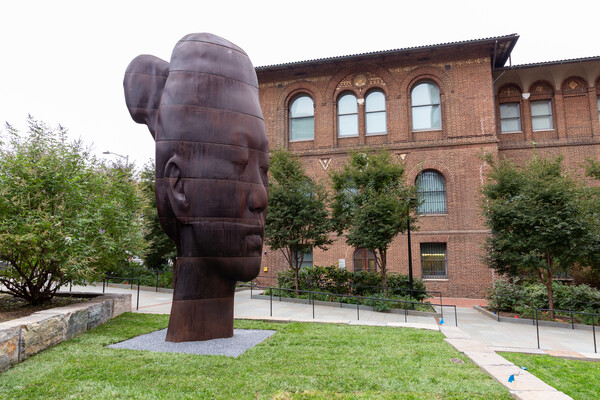
(From left) Doctoral student Hannah Yamagata, research assistant professor Kushol Gupta, and postdoctoral fellow Marshall Padilla holding 3D-printed models of nanoparticles.
(Image: Bella Ciervo)

Sociologist Wendy Roth has been studying perceptions of race and racial boundaries for two decades. “My work looks at the different factors that lead people to change how they think about race and ethnicity,” says Roth, who arrived at Penn in 2019.
The rise in popularity of genetic ancestry tests—particularly at-home kits done with little professional deciphering of results—coincided with Roth’s time in graduate school at Harvard University. Notions she’d heard about how people might use the information they gleaned from such tests led her to begin asking questions. “When I started interviewing people who’d taken genetic ancestry tests and found that many of them changed their racial identity based on their test results, I wondered if this might change how we understand race in our society,” she says. That’s what her latest project aims to determine.
Specifically, Roth is trying to understand how others view individuals who change their racial identity after completing an at-home DNA test. Backed by a grant from the National Institutes of Health, Roth will spend 18 months conducting an online survey experiment. Some 9,000 participants will view profiles of fictional individuals describing their experience taking a DNA test and their newly formed racial identities stemming from those test results. These fictional profiles will appear in various contexts, for example in a college application or to join a cultural group or donate bone marrow. The individuals’ race and profile photo will also vary.
“We have a sense of which influences are likely to be most significant,” she says. “By far the strongest influence so far is what the photograph looks like. People tend to put more emphasis on that than any of the other characteristics, including the genetic ancestry results.”
Though Roth won’t have final results until mid-2024 at the earliest, she suspects that understanding how genetic ancestry tests affect a person’s identity could alter racial demographics in the United States. Previous research showed that people who change their racial identity based on such tests often mark that new identity on the census.
Beyond that, Roth says this work has the potential to elucidate the social processes that allow discrimination in the U.S. to persist. “Certain groups experience a mismatch between how they self-identify and how others, from potential employers and landlords to the general public, see them,” she says. “We need to get a better handle on that. We really need better data to understand how people experience race in their daily lives.”
Wendy Roth is an associate professor in the Department of Sociology in the School of Arts & Sciences and a research associate in the Population Studies Center at the University of Pennsylvania.
Michele W. Berger

(From left) Doctoral student Hannah Yamagata, research assistant professor Kushol Gupta, and postdoctoral fellow Marshall Padilla holding 3D-printed models of nanoparticles.
(Image: Bella Ciervo)

Jin Liu, Penn’s newest economics faculty member, specializes in international trade.
nocred

nocred

nocred